At the level crossing the dog wagging its tail is one of the main attractions in Wilhelmstal. It starts moving when the barriers are closing - a real railway enthusiast!
Attentive watchers of the scene soon notice, that also the trainspotters are "living": They turn their heads towards the passing trains.
|
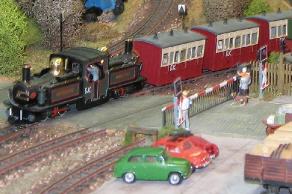
|
|
|
click for larger pictures !
|
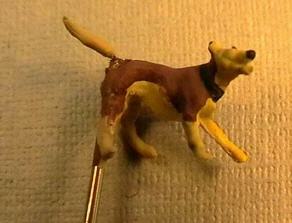
|
The principle of the "moving folks" remains the same throughout: A bore reaches from the moving extremity (or head) right through the figure, until it reaches a space with enough room for the drive - mostly underneath the baseboard.
Regarding the dog, a fine tube (syringe needle) passes through the right rear leg (to be honest: most of the leg is actually the tube!). A piano wire (0,3 mm), which carries the tail at its upper end, passes through it.
|
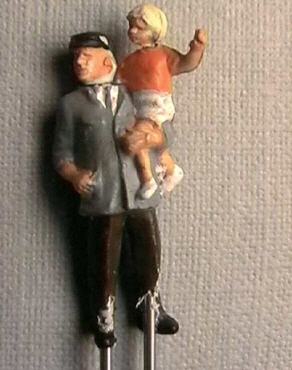
|
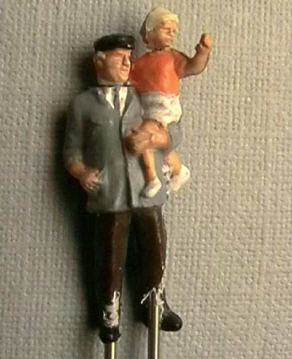
|
Its just the same with the trainspotters: one bore passes from the neck through the whole body's length and one leg (the granddaddy is drilled through both legs because of the child) underneath the baseboard. A fine tube lines also these bores. This has two main advantages:
In the first place it carries the figure, it is stuck in a bore in the baseboard and reaches underneath it. So the actuating wire is carried easily and without binding to the drive.
Secondly, it can always happen - when drilling the figure - that this long and delicate bore perforates a leg a little bit. This becomes invisible, when the tube is painted in the trouser's colour.
|
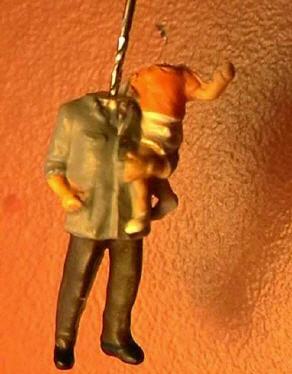
|
|
|
click for larger pictures !
|
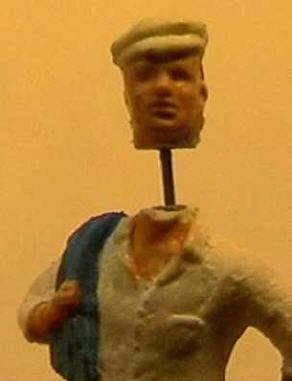
|
In most cases you will need two figures for creating one moving figure: Rarely the head or extremity can be reused that has been butchered before. Sometimes the part of another figure simply fits better into the scene.
Here it is visible, how the head is fixed to the thin piano wire (0,3 mm).
|
|
|
|
The drive for the dog's tail: A motor with suitable revolution speed (in this case: coreless Faulhaber with gears) carries a crank, which via a con rod drives another crank, fixed to the dogs tail wire (principle of windscreen wiper).
Click at picture on right for animation!
(421 KB)
|
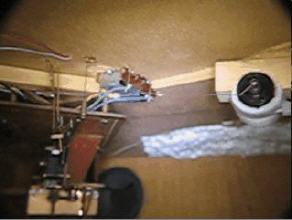
|
|
|
|
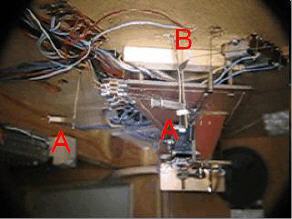
|
Here the scene of the drives is somewhat "crowded" because of the close proximity of the figures:
"A" marks the drive for the trainspotters, "B" is the axle for the dog's tail. The motor for the trainspotters is on the left, the one for the dog on the right (see picture above).
|
|
|
|
Click at pictures above (452 KB) and right (493 KB) for animation!
|
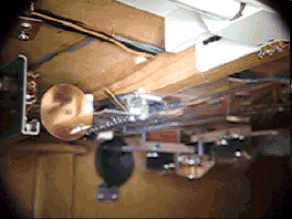
|
|
|
Click on other pictures to enlarge!
|
The trainspotters' drive is built on a detachable circuit board. A crank disk, driving the con rod to the figures' cranks, is made of copper clad epoxy and has on its back contact wipers that provide certain "stop-areas". A circuit with relays allows to stop the movement of the trainspotters' heads to either direction.
A toggle switch with centre off position allows to preselect the following head positions: View to the left, constant moving (searching) and looking to the right.
So the trainspotters can look for the next train, once they cought sight of it, looking onwards to it, then following it during its passage, and then look after it, as soon it has passed the level crossing.
|
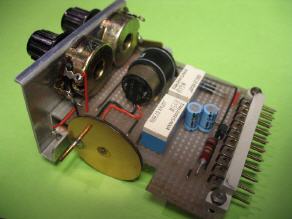
|
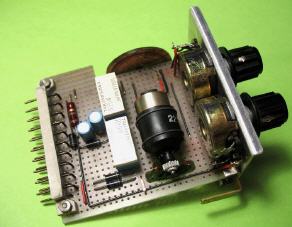
|
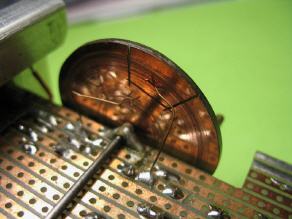
|
The two potentiometers on the circuit board allow to adjust the speed of the dog's tail and the heads' turning separately.
So this really brings life onto the layout!
|
|
|
|
|
Top of Page
Back to Selection "Moving Folks"
Back to Staff Page
|
Homepage - English
|

